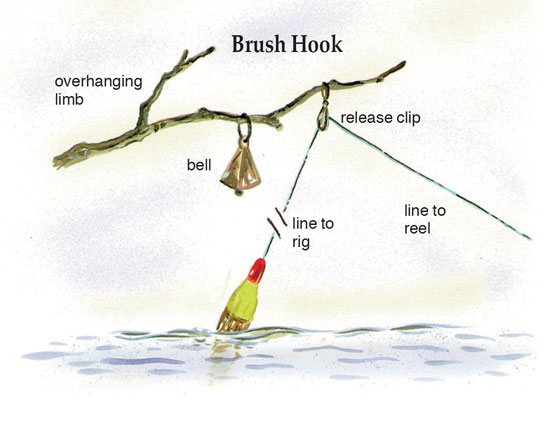Jug Lines for Catfish: An Effective and Time-Honored Fishing Technique
Jug lines for catfish are a popular and efficient fishing technique that involves using floating devices (jugs or bottles) rigged with fishing lines and baited hooks to catch catfish. These floating lines are set adrift on the water’s surface, allowing anglers to cover a wide area and monitor their catches remotely. When a catfish takes the bait, it pulls the jug underwater, alerting the angler to reel in their catch. Jug lines offer a hands-on and exciting way to target catfish, making them a favored method among both novice and experienced anglers.

Introduction
When it comes to catfishing, anglers are always on the lookout for effective and time-tested techniques to land those monstrous whiskered fish. Among the many methods available, jug lines have emerged as a popular and efficient way to catch catfish. In this article, we’ll dive deep into the world of jug lines, exploring what they are, how they work, and the tips and tricks you need to make your next catfishing trip a resounding success.
Understanding Jug Lines
Jug lines for catfish, also known as jug fishing or jug lining, are a passive fishing method that utilizes floating devices (jugs or bottles) to suspend baited hooks at various depths in the water. This technique is particularly effective for catching catfish, which are known for their bottom-feeding tendencies.
How Jug Lines Work
The concept behind jug lines is relatively straightforward. Each jug is rigged with a fishing line, hook, and bait. The jug is then set afloat on the water’s surface, where it can move with the currents, tides, or wind. When a catfish takes the bait, it will pull the jug underwater, alerting the angler to the catch. The angler can then retrieve the jug and reel in the fish.
Setting Up Jug Lines
To set up jug lines effectively, follow these steps:
1. Gather your materials:
You’ll need jugs or bottles (typically 1-2 liter soda bottles work well), fishing lines, hooks, and catfish bait (such as live or cut baitfish, chicken livers, or stink baits).
2. Rig the jugs:
Attach a sturdy fishing line (10-20 feet in length) to the neck of the jug, and secure the hook at the end of the line. Make sure the line is long enough to reach the desired depth.
3. Bait the hooks:
Place your preferred catfish bait on the hooks. Ensure it is secure to prevent it from coming loose in the water.
4. Deploy the jugs:
Carefully place the rigged jugs at various depths in your fishing area, making sure they are evenly spaced. It’s a good idea to mark each jug with your name or a unique identifier to avoid confusion with other anglers.
5. Monitor the jugs:
Keep an eye on your jugs from a distance. When a catfish takes the bait and pulls the jug underwater, it will become visibly tilted or submerged. This is your cue to retrieve the jug and reel in the fish.
Tips for Successful Jug Fishing
1. Choose the right location:
Research the waters you plan to fish in, looking for areas with known catfish populations. Bridges, submerged structures, and areas with moderate current are often good spots.
2. Experiment with bait:
Catfish have diverse preferences, so be willing to experiment with different baits until you find what works best in your area.
3. Check local regulations:
Be sure to familiarize yourself with local fishing regulations, including the maximum number of jugs allowed and any specific rules regarding their use.
4. Safety first:
Always prioritize safety when jug lines for fishing. Keep a safe distance from other boaters and wear a life jacket when on the water.
Conclusion
Jug lines for catfish offer an exciting and productive way to enjoy a day of fishing. This passive technique allows anglers to cover a large area while keeping an eye on their catches from a distance. Whether you’re a seasoned angler or a beginner, jug fishing can be a rewarding and effective method for landing those trophy-sized catfish. So, grab your jugs, bait, and fishing gear, and head out to the water for an unforgettable catfishing adventure.



